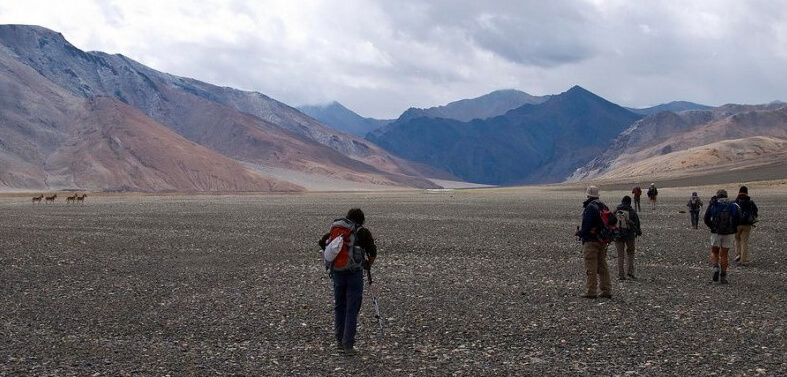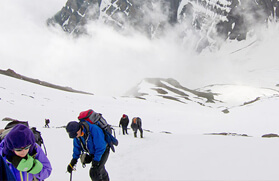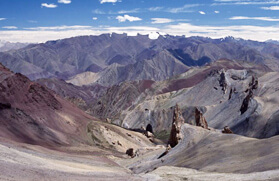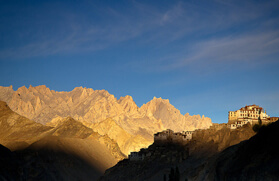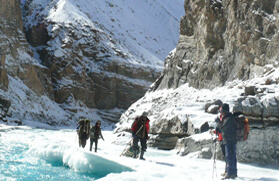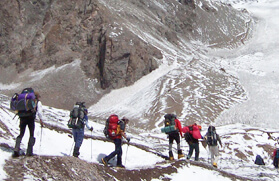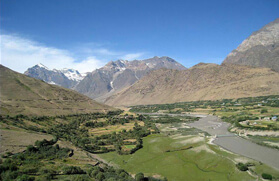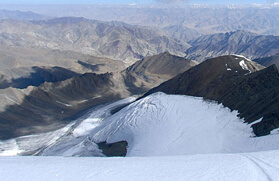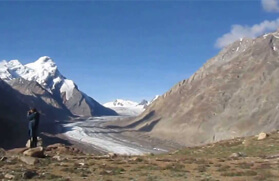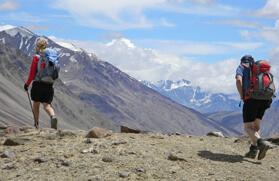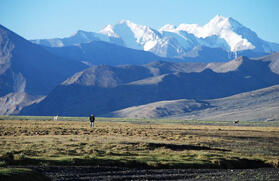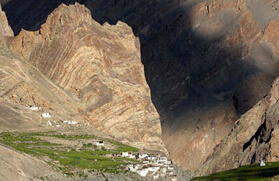Rupshu Trek
The Rupshu Valley is a high-altitude desert that lies southeast of Leh. Rupshu is actually a western extension of the Tibetan Plateau. Previously closed to visitors, this region now reveals some of the most amazing scenic panoramas that are found in Ladakh. An abode of different sects of the Indo - Tibetans that reflects from cloister to cloister, a terrain that changes its colour at every turn and a cascade of mountains that is captured from high altitude passes, Rupshu valley perk you to discover a potpourri of culture and nature. Further, the region is dissected by numerous mountain ridges that can be traversed by a number of ancient trading routes, making the Ruphsu trek one of the moderate to challenging treks in the Ladakh region. While on this trek, one ventures into a wilderness where only a few nomads live, totally reliant on their yak and sheep herds for their subsistence.
Rupshu has majestic sweeping deserts that are separated by narrow ranges with lofty passes offering distant views, and a wide ranging nomadic people called Changpas. Throughout the Rupshu trek one can still reveal the yore days truth when traders from Lahaul once drove their caravans of sturdy mules across Rupshu and travelled into western Tibet. Nonetheless, within the Rupshu Valley, which is spread beneath the mighty peaks of the Ladakh and Zanskar mountains, are several large crystalline lakes including Tsomoriri and Pangong.
The Rupshu valley trek commences from Hemis at 3,505 meters, which is approximately 40 kilometers by road from Leh. From Hemis the Rupshu trek heads via Martselang to Shang Sumdo, which is at an elevation of 3,850 meters and thereafter ascends to Latza Kongmaru at 4,800 meters. One can expect the steep and strenuous climb from Shang Sumdo to Latza Kongmaru. The trek from Latza Kongmaru leads to Kongmaru La, which is one of the high altitude mountain passes at an altitude of 5,030 meters, and continues to descend to Langtang Chu at 4,250 meters. The journey thereafter heads to Yakrupal at 4,700 meters and from there it turns to Zalung Karpo La, another high altitude mountain pass that has an altitude of 5,200 meters approximately. From Zalung Karpo La the trek descends to Sorra at 4,200 meters and further whirls to Dat at 4,200 meters. From Dat the Rupshu trek turns to Lungmo Che at 4,010 meters via Yar La at 5,000 meters and thereafter snakes to Lun at 4,100 meters and embarks upon a completely different landscape. From Lun the trek continues to ascend to Marang La at 5,300 meters and thereafter descends to Takh. From Takh the Rupshu valley trekking finally concludes at Manali, which is at an elevation of 2,050 meters.
Day 1:
Travel from Delhi to Leh by air.
Day 2:
Day Reserve for Leh Exploration.
Day 2:
Leh to Rumtse (70 kms.; 2 hrs)
Day 3:
Rumtse to Kyamar (4/5 hrs. )
Day 4:
Tisaling to Pangunagu (5/6 hrs. )
Day 5:
Pangunagu to Nuruchan (4/5 hrs. )
Day 6:
Nuruchan to Rachung Karu (4/5 hrs. )
Day 8:
Rachung Karu to Gyama Lhoma (7/8 hrs. )
Day 9:
Gyamalhoma to Korzok (Tso Moriri Lake) (6/7 hrs. )
Day 10:
Day reserve for exploring Tso Moriri surrounding areas
Day 11:
Leh
Day 12:
Delhi & Departure




